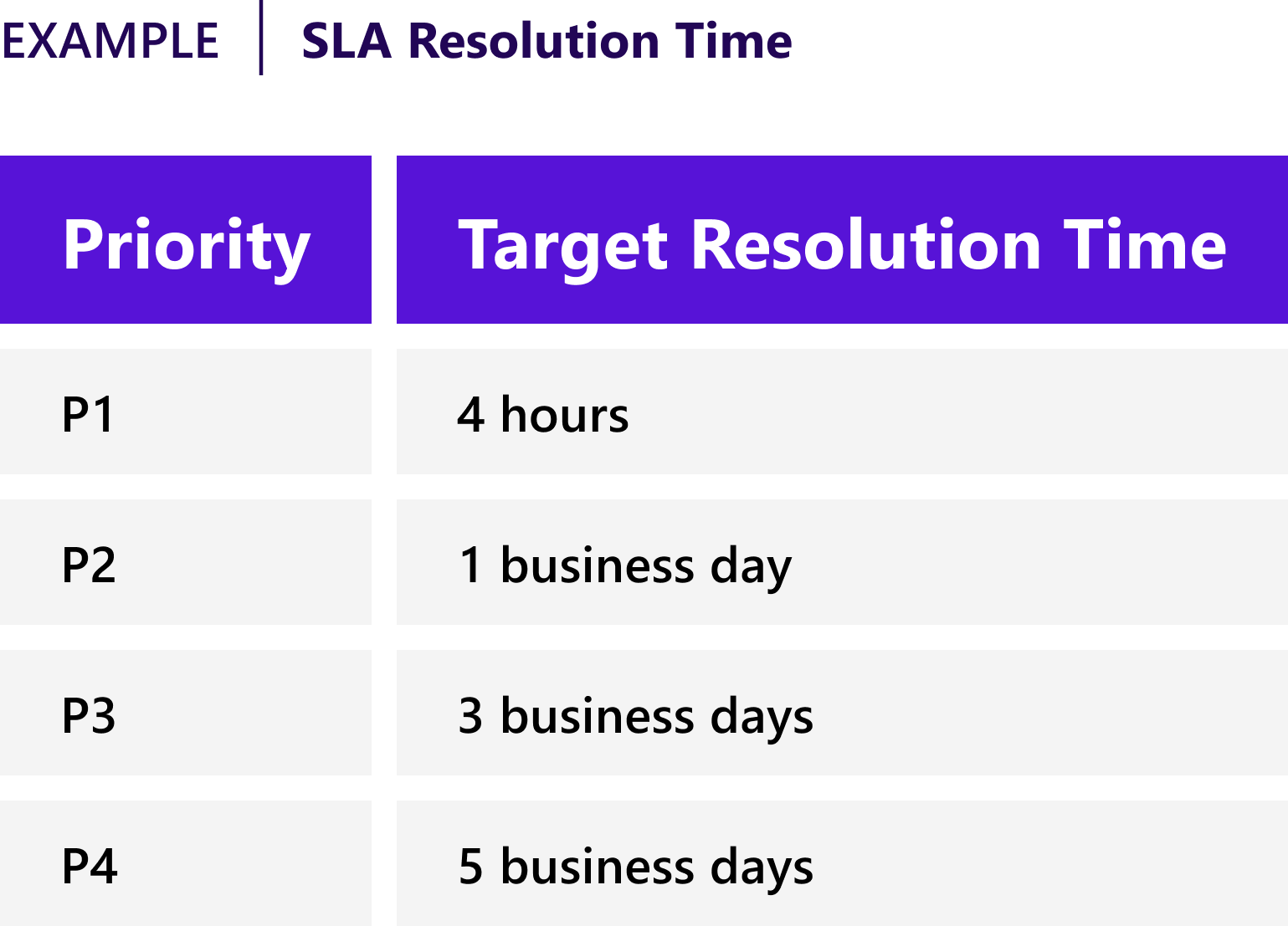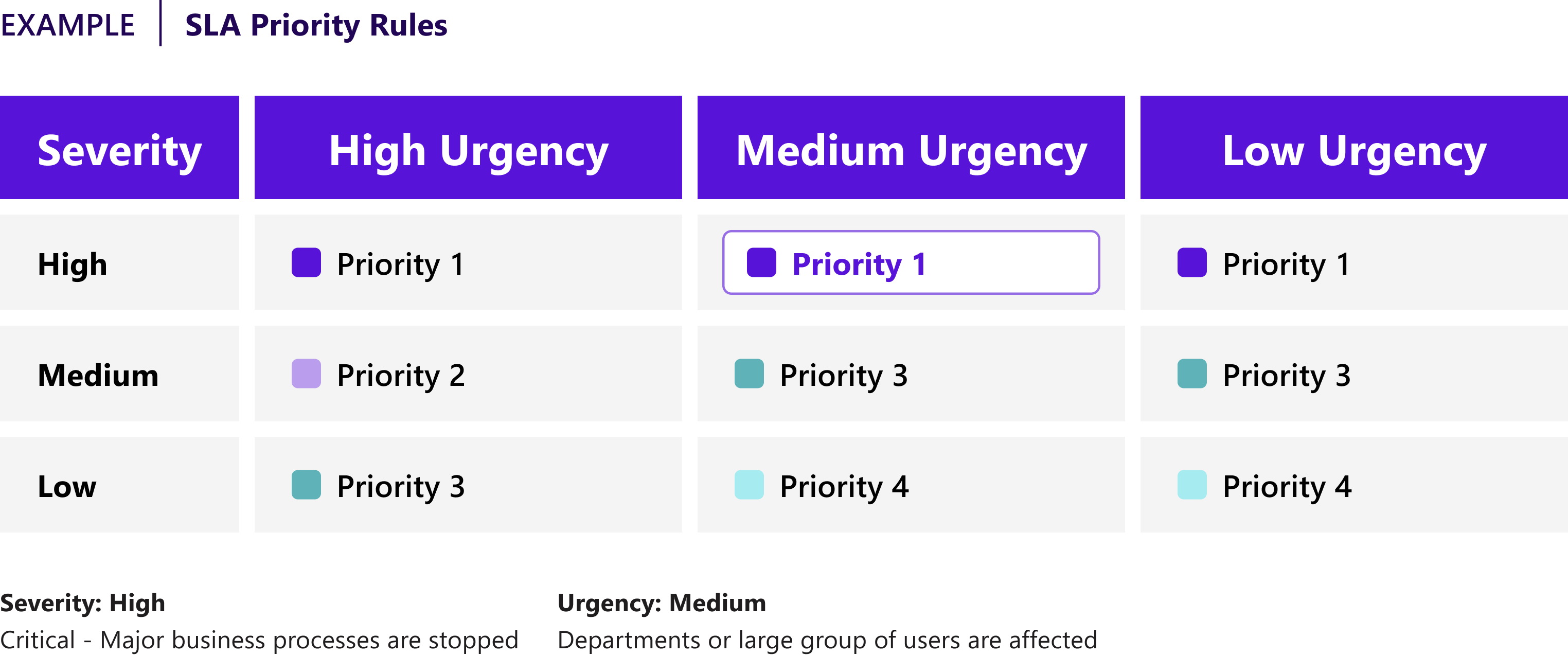¶ Service Level Agreement
¶ What it is
A Service Level Agreement (SLA) is a part of the contract an end user signs with a service provider. It outlines minimum expected service requirements, including quality, availability, and timeliness.
The problem resolution time is the time duration starting from when the issue is first created by the client and ending by the time when it gets solved.
¶ Why it is useful
Time-based deadlines require the service provider to fix the issues raised in the agreed format and severity levels. It guarantees service efficiency and quality. Especially business users will want such agreements to ensure they can use business-critical software without significant issues.
¶ When to use it
When the product/service is live, the customer and the service provider agree on an SLA pattern and conditions.
Usually, the production or service teams are involved depending on the exact type of product/service.

¶ How is it done
- Define the service level: To figure out the proper level, you should first know the current resolution time, the capacity of the support team, and customer satisfaction. Then it’s more practical to set a reasonable target for the support team.
- Define the priority: Similar to the judgments of the bug priority, severity and urgency work together to define the importance of customer complaints.
- Define the format and process: Unified processes and platforms should be used to reduce communication delays.
- Define the corresponding percentages of customers: There should always be a baseline of SLA, which means a great majority of users, i.e., 90%, are receiving this level of service. Exceptional customer service is also a measurement of the SLA. E.g., 50% of users experience 0.5 days shorter resolution time than the baseline requirements.
- Regularly review your SLAs on whether you are meeting them, whether they are good enough for customers and what might need adjustment.
¶ Do's & Don't
Do's
- Review SLAs from time to time. Are you meeting the targets? Can you raise the service level? Are customers satisfied with the SLAs?
- Remember to involve all relevant departments and team members in this process. Meeting SLAs is a high-effort process where many people are involved. Please make sure they are aware and have a say.
- Work with realistic assumptions. E.g., if you don’t have staff on hand at night, calculate maximum response times with that in mind.
Don't
- Don’t be too ambitious at first. Instead, set targets you are sure you can meet rather than overpromising.
¶ Useful Tips
¶ Tips for customer service
- Set higher internal criteria than the agreed SLA
For example, set 8 hours of internal resolution time for P1 issues, if you agree with the customer externally, as 10 hours.
- Always seek improvements
It’s not just about meeting the agreed standards but also finding the right time to set slightly higher standards as the new goal.
- Do not set a target of 100% users for any SLA
Remember, there will always be exceptions. So leave that buffer for the support team to breathe.
- Response Time or Resolution Time?
When defining SLA, be aware of what data you are taking as metrics.
Is it the response or resolution time?

¶ Example
